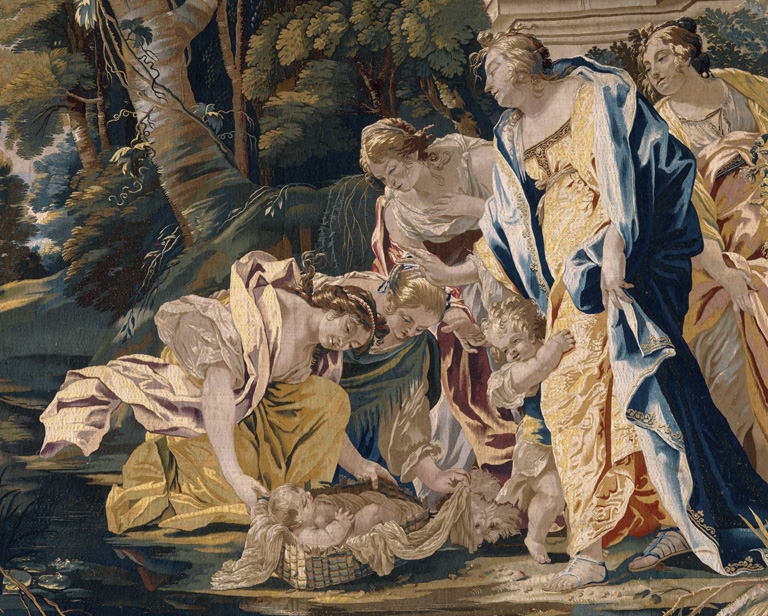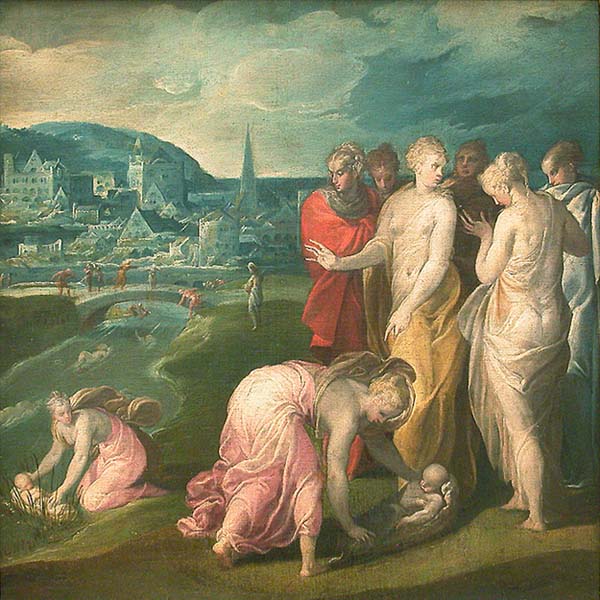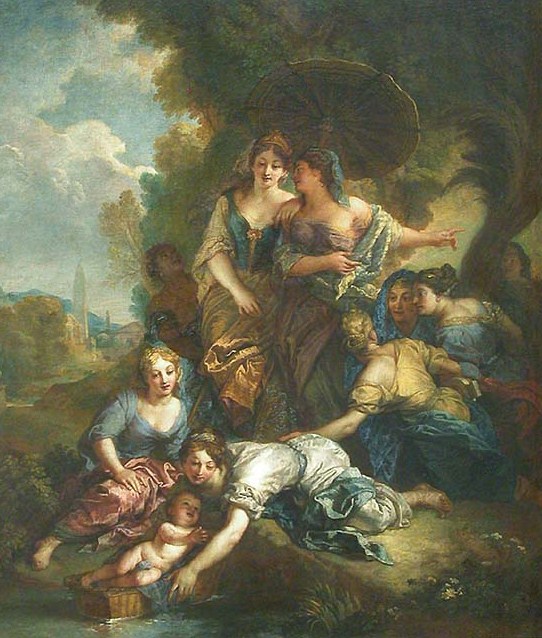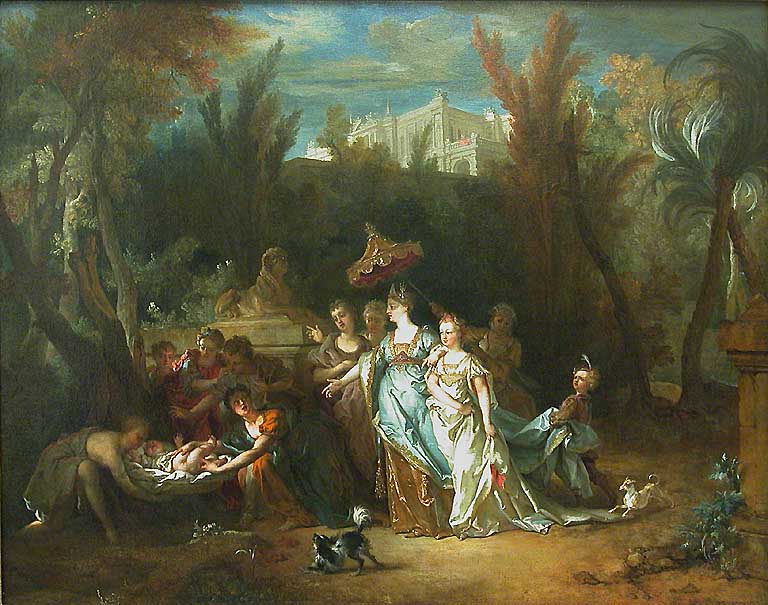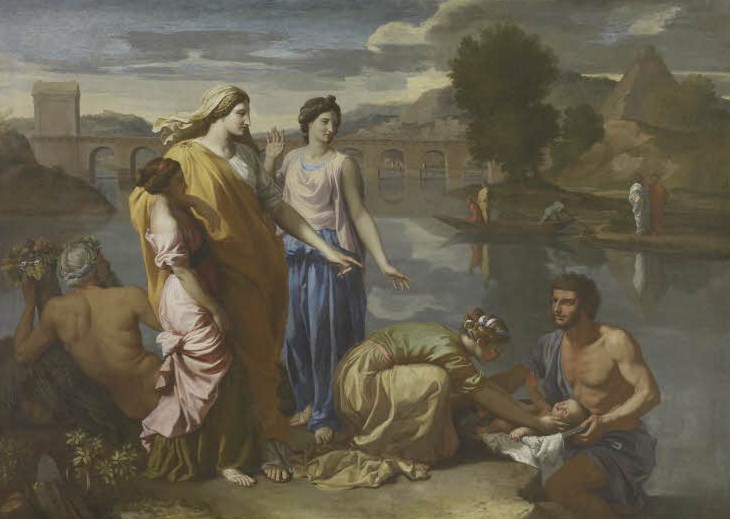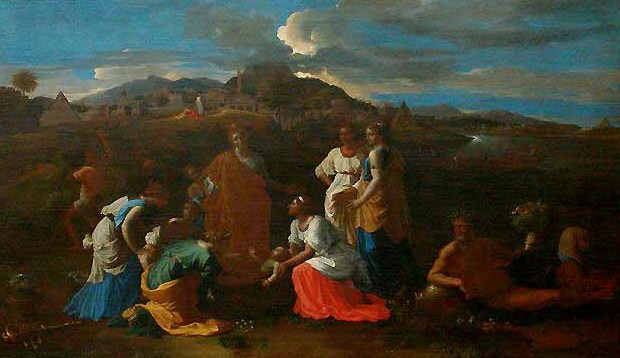Un jour, Une Œuvre,
18/01
Finding of Moses
Scenes from the life of Moses (1)
This is the story of the life of Moses often represented in the Louvre. Fiction, pagan legend or story credible? Course in the rooms and in the texts.
Finding of Moses
OA 6086
Third part of the tapestry
of the Old Testament, after Simon Vouet executed
Louis XIII, for the palate
Louvre 1630
Paris,
Tapestry, wool and silk Richelieu 1st floor Effiat Room 32
A new king started to rule over Egypt, but he knows nothing of Joseph. "In time there arose over Egypt a new king, one who did not know Joseph. So he said to his people: “Look! The people of Israel are more numerous and mightier than we are. Let us deal shrewdly with them (…) Finally Phar′aoh commanded all his people: “You are to throw every newborn son of the Hebrews into the Nile River, but you are to keep every daughter alive." (Exodus 1: 8.22). During this attempted genocide that according to the Bible, Amram and Yocheved, a Hebrew couple become parents of a boy 'divinely beautiful' (Acts 7: 20). They keep hidden for three months; and short on solutions, Yocheved places the child in an ark of papyrus she deposits on the Nile. She did make history.
The story of the life of Moses often represented in the Louvre
Josabeth exposing Moses
on the Nile
Inv 7126
Pierre PATEL
1660
Painted to serve as
a top-of-door in the apartment
Anne of Austria
at the Louvre
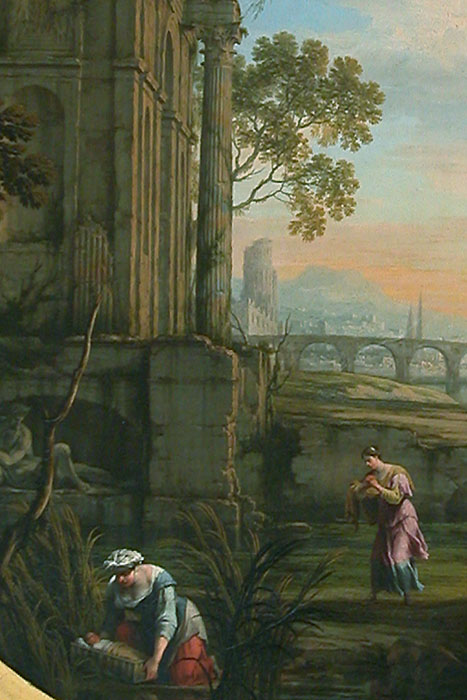
“ About that time, a certain man of the house of Le′vi married a daughter of Le′vi. And the woman became pregnant and gave birth to a son. When she saw how beautiful he was, she kept him concealed for three months. When she was no longer able to conceal him, she took a papyrus basket and coated it with bitumen and pitch and put the child in it and placed it among the reeds by the bank of the Nile River. But his sister stood at a distance to see what would happen to him.
When Phar′aoh’s daughter came down to bathe in the Nile, her female attendants were walking by the side of the Nile. And she caught sight of the basket in the middle of the reeds. She immediately sent her slave girl to get it. When she opened it, she saw the child, and the boy was crying. She felt compassion for him, but she said: “This is one of the children of the Hebrews.” Then his sister said to Phar′aoh’s daughter: “Shall I go and call a nursing woman from the Hebrews to nurse the child for you?” Phar′aoh’s daughter said to her: “Go!” At once the girl went and called the child’s mother. Phar′aoh’s daughter then said to her: “Take this child with you and nurse him for me, and I will pay you.” So the woman took the child and nursed him. When the child grew older, she brought him to Phar′aoh’s daughter, and he became a son to her. She named him Moses and said: “It is because I have drawn him out of the water.” - Exodus 2:1-10
Finding of Moses
RF 3937 Niccolò dell'Abate Modena, 1509 or 1512 Denon Grand Hall
Room 8
In Hebrew, Moses means : Drawn, rescued from the water
The etymology of the name Moses is debatable. In Hebrew, Moses means "drawn; rescued from the water. "
The historian Josephus claimed that the name was made up of two Egyptian words meaning 'water' and 'saved'. It could also mean 'son'.
Finding of Moses : Fiction, pagan legend or story credible?
Many believe that these events are fictitious. It is true that no direct archaeological evidence has been found for the years that the children of Israel spent in Egypt.
Critics felt that this episode reminds suspiciously the old legend of King Sargon of Akkad,
legend also speaks of a child in a basket snatched a river. But history is full of similarities.
And that of the child who manages to find a high position is a recurring theme of folklore,
Babylonia and Egypt are both riverine nations.
Allegations that the biblical account would build a pagan legend are inconsistent.
Moses saved from the waters inv 4527
Charles de PIT 1701 With its golden colors Venetian inspired and refined grace of his figures, this table reflects the relaxation that inflects art
to end of the reign of Louis XIV. Moses saved from the waters RF 3790
Nicolas de LARGILLIERRE, 1728
The female figures in costume Contemporary and presence of pet dogs give this
biblical theme grace a bit light.
However, there is indirect evidence to support the credibility of the biblical narrative. "Archaeological data clearly show that Egypt was frequented by the people of the Levant. Thus, from 1800 to 1540 before our era about, Egypt has been a place of migration attractive to the Semitic peoples of Western Asia. "
The biblical description of slavery in Egypt is accurate. And recruitment of the biological mother of Moses is unparalleled in the Mesopotamian adoption contracts. The small ark story rings true. This is a commonly used material for the Egyptians to build light and fast boats. " Finally, the historian George Rawlinson: "Infanticide [...] was common in different places and times, and considered banal. "The biblical account may be disturbing, but it remains credible.
Finding of Moses
Inv 7271 Poussin 1638
Richelieu 2nd Room 14
This is the first version of this biblical theme taken from Exodus
Poussin treated three times.
Finding of Moses
Inv 7272
Poussin 1647
Richelieu 2nd Room 14
Painted for the banker Jean Pointel. This is the second time in three Moses saved from the waters Chick we know. The third, painted in 1651, is kept at the National Gallery in London.
The risk that Moses' parents took to hide their child is mentioned in Hebrews 11:23 as an act of faith. “By faith Moses was hid by his parents for three months after his birth, because they saw that the young child was beautiful and they did not fear the order of the king. By faith Moses, when grown up, refused to be called the son of Phar′aoh’s daughter " Stephen says that "Moses was instructed in all the wisdom of the Egyptians. In fact, he was powerful in his words and deeds" - Acts 7:22
The statement of Josephus that he was promoted to the rank of general in a war against Ethiopia is unverifiable. At 40, the power and wealth available to him. But one incident changed his life.
